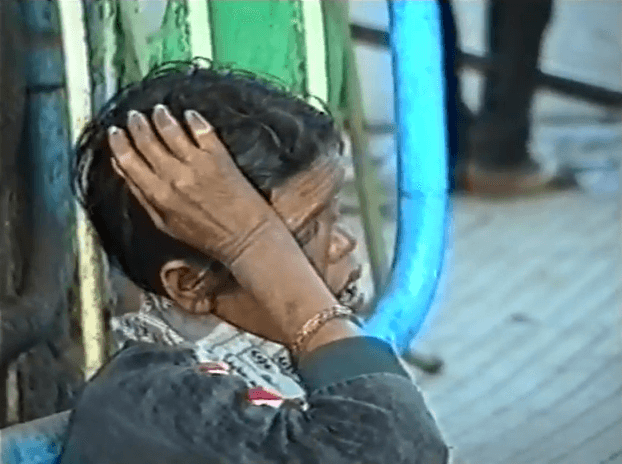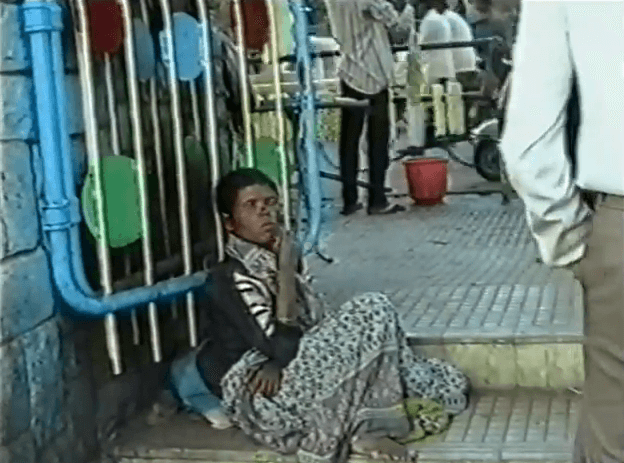The increasing ‘liveliness’ of machines and accessibility to the virtual world has raised questions about whether it is possible to uncouple the mind from the body in through a host of different strategies. The basic idea is that if we are able to escape the ties of our own flesh then we can upgrade them and even replace them with immortal ones. Performance artist Stelarc has made some of the most extreme and enduring work on this subject. The artist characteristically depersonalises his anatomy and claims that it is not only an object that can be subjected to re-designing but is also ‘obsolete’. During his performances, Stelarc mentally ‘vacates’ his own body to prove its obsolescence, and claims that his body is no more than a site for redesigning and re-engineering the human form.
In my view, Stelarc’s work paradoxically highlights the profound importance that embodiment holds for being human. When Stelarc dissociates his mind from his body he demonstrates its sheer plasticity and robustness. The artist then recolonizes the body with robots, communications technologies and soft prostheses as proof of this inbuilt physical redundancy. Yet the machines he hosts are given context by the presence of a body – for in its absence, they are just a collection of machines devoid of meaning. Moreover, redundancy is a characteristic of complex systems, which are a form of organization that does not obey the Cartesian, dualistic laws that govern machines. The artist’s rejection of these qualities simply highlights that the human body is not a machine.
There is nothing liberating about having an anesthetized body, nor one that is functionally redundant. While Stelarc’s suspensions and performances demonstrate that we can temporarily ‘forget’ our bodies in order to explore a transcendent state of being, there are those who live in a permanent state of disconnection.
My interest in design and the human body began as a medical student during a visit to Anandgram (Village of Joy) leprosy hospital and rehabilitation center on the outskirts of Poona, India. I was assisting a surgeon to re-thread tendons in patients with critical loss of hand function. By attaching the healthy muscles of less important tendons, such as those in the fingers, to restore actions in more important ones, such as the thumb, important complex actions such as grip could be restored. These operations were performed in a simple sterile room without general anesthetic, because the Mycobacterium leprae bacillus had a devastating preference for nerve tissue, which led to paralysis of movement and sensory loss. In other words, the areas of the body affected by leprosy were insensitive to the pain of surgical incisions. This made for strange polite conversation with a fully awake patient, while assisting the surgeon perform complex surgery, in what was little more than a bare room.
Yet through this simple approach my colleague was able to help many patients, without the normal cost associated with employing an anesthetist for complex, deep and sometimes lengthy surgery. It was also possible to see just how effective the rearrangement of the patient’s anatomy would be by asking them to move their hand during the procedure. These visceral, restorative procedures were not confined to hand function but could be applied to other important muscle groups. One vital operation involved splitting a face muscle tendon and attaching it to the inside of the eye. This enabled people who had lost the ability to blink to be able to voluntarily do so by clenching their teeth. With intensive training, eye drops and rehabilitation, those who had undergone the procedure were able to consciously protect their eyes from drying and ultimately save themselves from blindness.
There was much work to be done since M. leprae prefers to infect nerves and soft tissues, starting at the extremities and working its way towards the body. Although the infection was treatable in its early stages, once the disease had set in it caused irreversible nerve damage and extensive tissue destruction, resulting in the physical ‘stigma’ of leprosy*. My colleague used his surgical skill and experience to re-site hand and facial tendons correctly, with the active cooperation of his patients, both within the realm of the operating theater and without. The Anandgram community created a supportive environment and provided active, intensive physiotherapy and much encouragement for residents to learn how to use, and to continue to use, their re-wired bodies. Following these interventions, some residents returned to employment by customizing the operating interfaces and altering their mechanical advantage industrial machines to suit specific impairments that could not be restored by surgery, such as loss of a limb **.

Despite their strange disfigurements and odd rearrangements, residents learned how to use their re-wired bodies again. Although I had been party to remarkably mechanistic interventions such as rethreading tendons and re-stitching them in unnatural places, it was clear to me that the simple re-wiring alone had neither affected nor restored each person’s physical integrity. From the moment the patient left the operating theater, their re-located tendon insertions tugged on their muscle groups, which sent signals to the brain that the entire body had been immersed in a novel reality. Each resident would have to work hard to re-tune their mind and body into a synchronous existence to restore and establish networks of interactions that spanned the physiological, anatomical, cognitive, social and environmental realms.
By focusing on their bodies, the residents of Anandgram became physically and socially reintegrated, and were able to re-create their being in the world. This amazing ability is something that all of us are able to do, such as when we train to increase our fitness, or start to recover from a debilitating illness, and is what makes us all truly unique. Our anatomy enables us to be who we are, no matter what that form may be, and allows us to possess qualities that machines do not have such as flexibility, robustness, the ability to renew or regenerate and the capacity to deal with ‘the unknown’. Of course, there are limits to our physical potential and instinctively, we want to push ourselves to our full potential, exceed it, or, like Stelarc, temporarily resist ‘being in’ our bodies. This is not a healthy space to inhabit for any prolonged period – indeed, it is a kind of death. Next nature views the human body as a powerful connector, that empowers and enables us to enjoy a many kinds of experiences and ways of being that do not separate mind and matter but embrace them as a seamless whole.
*The physical ‘stigma’ of leprosy such as depigmented skin patches, loss of digits, chronic ulcers, ‘lion-like’ facial deformity and blindness are only part of the affliction. People who contract the infection are also subject to psychological and social traumas, which compound difficulties and prevent people from seeking treatment early.
**This video that I made in 1992 explores the difference between inhabitants of Poona that enjoyed a normal life and compares it with those with leprosy. Some are begging in the streets, while others are receiving treatment at the Anandgram leprosy hospital, or employed in specially designed workshops in the community.

gregorylent
sooo mechanistic .... energetically, in the multidimensional reality that we live within, the body is indivisible from the plant. adjust your theory please :- )
Posted on